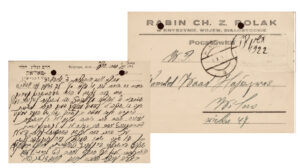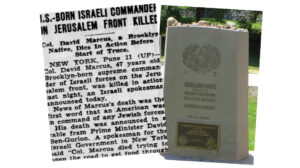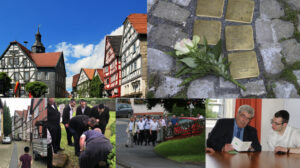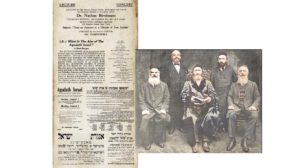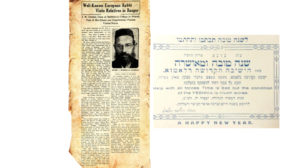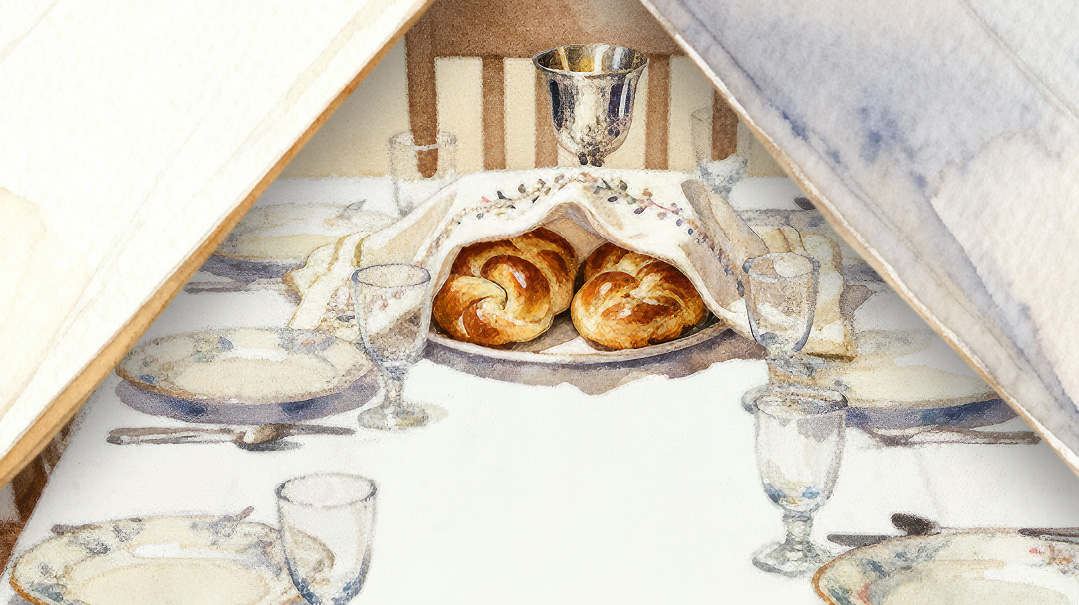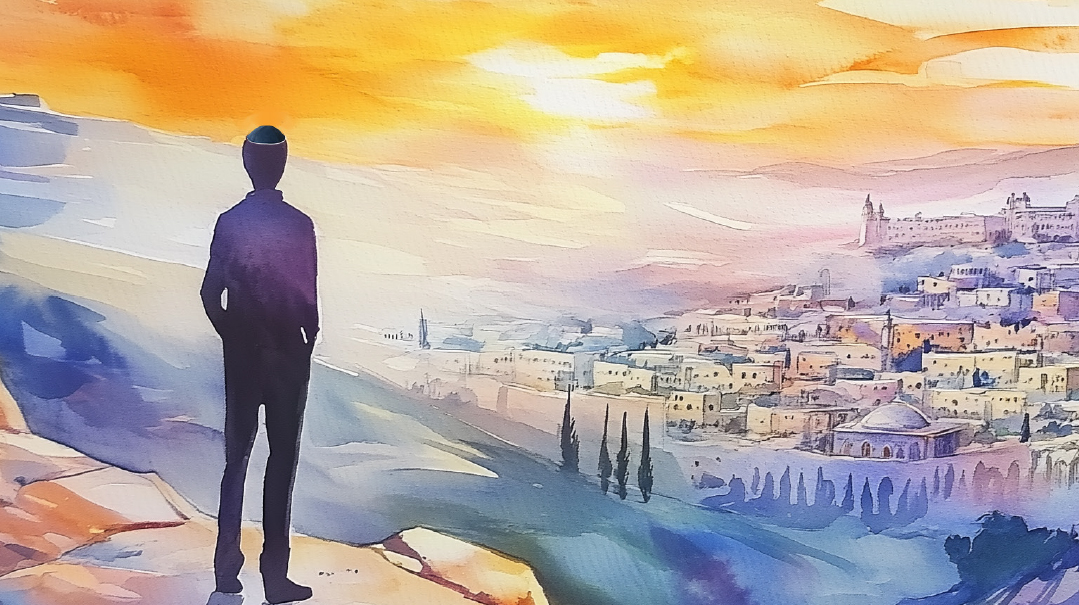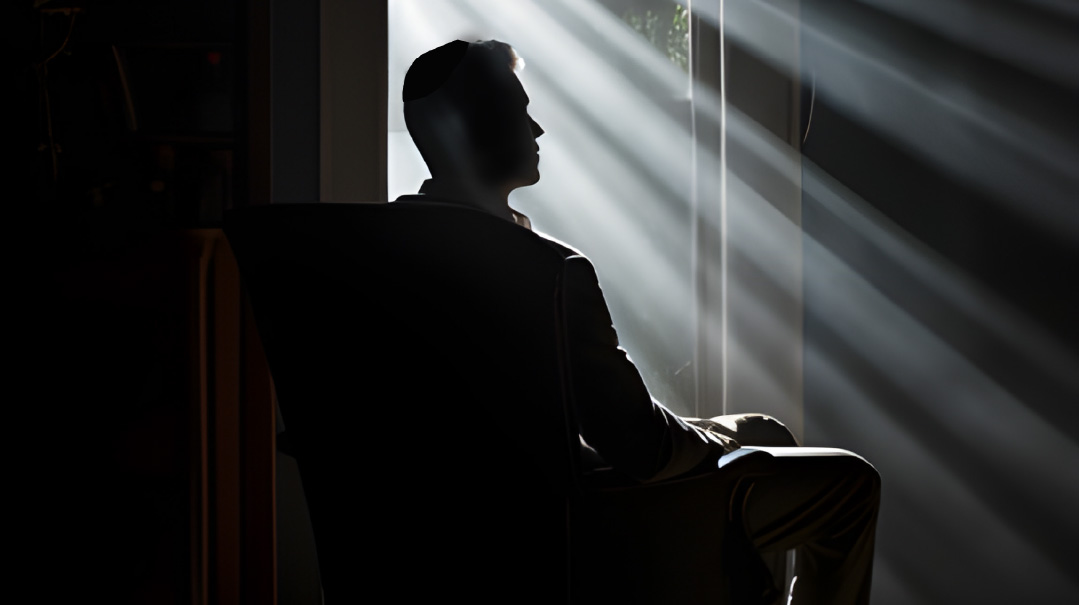In Zeide’s Shadow
| April 14, 2021Sometimes we actually merit to feel our ancestors hovering over us as they guide us through life
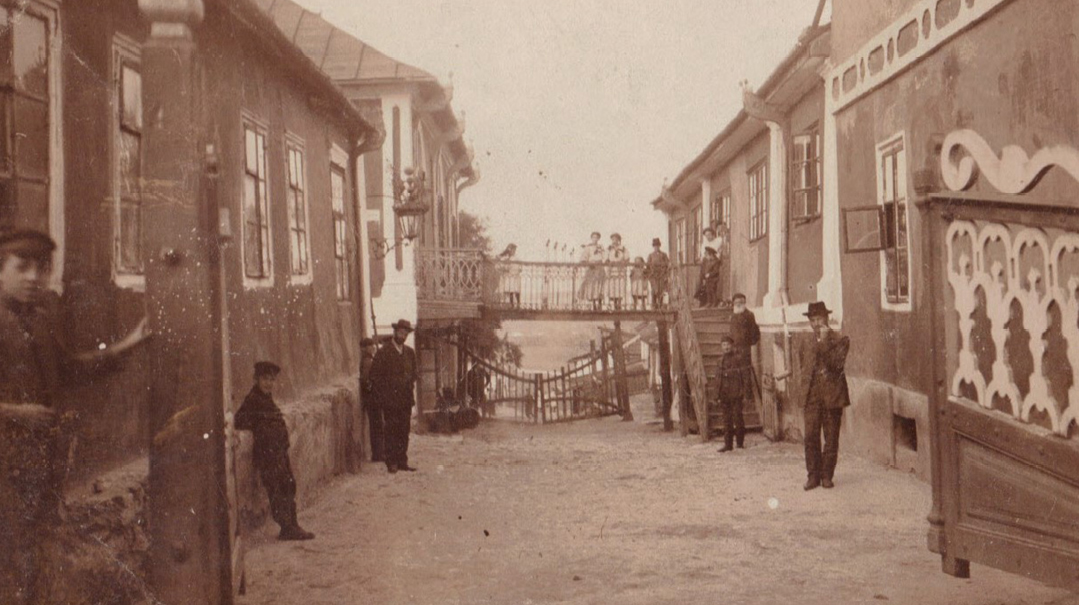
For those of us whose parents were survivors, grandparents were a rarity. I wasn’t zocheh to know my paternal grandfather, the Chotiner Rebbe (Rav Mordechai Yisrael Twersky) Hy”d, who broke from the line of the firing squad that was leading his kehillah to their deaths and jumped into the Dniester River in order to toivel before his murder. But I had the priceless treasure of my earliest years with my maternal zeide, Grand Rabbi Avraham Yehoshua Heschel, the Kopyczynitzer Rebbe zy”a.
The Rebbe was born in Husyatin in 1888, lived in Kopyczynitz, Galicia, where his father was rebbe, traveled to Vienna after World War I, and managed to get from Vienna to New York in 1939, before the outbreak of the Holocaust. While in Vienna, his home became a center for the thousands of refugees who fled to Austria, and he took hundreds of Jewish orphans under his wing as well. When he moved with his family to America and settled in Lower Manhattan, he continued to bring chizuk, refuos, and yeshuos to Klal Yisrael until his death in 1967. With his sharp mind, his expertise in all areas of Torah, and his extraordinary chesed, he was considered one of the gedolei hador in both Europe and in America, with a wide-reaching global impact — all emanating from a tiny shul on the Lower East Side, and later in Boro Park.
My father, Rabbi Yaakov Yosef Twersky (the Chotiner Rav of the Bronx) a”h, had been orphaned at the age of 14, and survived ghettos, torture, labor camps and death marches, finally coming to America in 1946. In 1961, he married my mother, Chaya Pearl Heschel. a daughter of the Kopyczynitzer Rebbe.
Even though my zeide was niftar before my third birthday, I’ve always considered him a guiding force in my life, and have received “regards” from him at various junctures along the way — throughout my youth, teenage years, and well into my adult life. Whatever I do, wherever I go, whomever I speak with, there always seems to be a connection to Zeide — and not only how he assisted thousands of people all over the world, or how he altered people’s lives forever. What is most fascinating to me is how he’s always been a shadow in my own life.
There is a special connection between the sandek and the baby, and I had the zechus to have him as sandek at my bris, held in the Bronx Park East Chotiner Jewish Center. It’s brought down in Pele Yo’etz that a sandek has an influence on the neshamah of the child, and I’ve always felt that Zeide has been hovering over me ever since.
By the time of my upsheren in Nissan 1968, Zeide was no longer alive (he passed away on 15 Tammuz, 1967), and I was given my first haircut by Mr. Morris Gryzmek, a mispallel in my father’s shul. Morris was the “Barber of Auschwitz” and lost his entire family in the Holocaust. He swore that he was blessed with the koach that any child he gave the first haircut to would never lose his hair (baruch Hashem, so far it’s been mekuyam). My holy uncle, Rebbe Moshe Mordechai Heschel, the young Kopyczynitzer Rebbe, read with me the alef-beis for the first time. (The sudden, tragic death of the Rebbe — an unusually perceptive leader who was especially tuned into young people and their challenges — on Shabbos Chol Hamoed Pesach, 1975, at age 48, was a huge loss for Klal Yisrael.)
Before his death, Zeide presented me with a shemirah coin, which I kept under my mattress until my bar mitzvah, when I visited Eretz Yisrael for the first time. Then my father had the coin placed in a small leather pouch around my neck, which I have worn uninterrupted for the past 42 years.
The following year, I traveled alone to Eretz Yisrael for a summer youth program on Kibbutz Yavneh, where we kids were “adopted” by local families who “picked” us the first day we arrived. Mr. Mordechai Weisman warmly welcomed me and invited me for the upcoming Shabbos lunch to his home. When I walked into the Weisman home, imagine my amazement as I saw, hanging in the living room, a photo of my Kopyczynitzer zeide! Zeide used to stay at the home of his parents, Mr. and Mrs. Yehuda Weisman in Skalat, Galicia (an hour north of Kopyczynitz) when he went back to visit the town after moving to Vienna. I asked him why he happened to pick me in the lunchroom a few days earlier, and he said, “I just had a feeling….”
When I attended Yeshiva University in the early 1980s, I was placed in the shiur of Rav Nissan Alpert, who, before moving to Far Rockway, was the rav of Kehillas Chevras Bochurim on the Lower East Side and the talmid muvhak of Rav Moshe Feinstein. When he arrived on the Lower East Side as a European teenager in the 1940s, Rav Alpert became a ben bayis of the Heschel family. Between shiurim, Rebbi used to tell me personal stories about my zeide and the family, and I knew that Rebbi felt an achrayus to watch over me, as Zeide did him.
In 1990, while working as a management consultant at Price Waterhouse, I was unhappy in my role, and a colleague suggested I speak to a senior partner at the firm, Mr. Baruch Plagman. In our initial discussion, he told me that his parents, Mr. and Mrs. Zvi Aryeh Plagman, were married in 1939 on an Erev Shabbos in the open-air yard at the Kopyczynitzer Rebbe’s house on Henry Street. It turns out that Zvi Aryeh Plagman had also learned as a boy with my zeide when the yeshivos in Vienna were closed. Not only did Mr. Baruch Plagman recommend me for my next job, but two years later, he was the shadchan who introduced me to my wife and signed the kesubah at my chasunah. What goes around, comes around.
Settling in Kew Gardens Hills, Queens, in 1994, I would never have thought that my house would be encircled by chassidim of my zeide. But indeed, two houses to my right is Mr. Willie Rosenfeld, who davened at the Zeide’s shul in Boro Park and continues to share some of the Zeide’s amazing miracles. My neighbors in the back are the Ghermans, whose great-great grandparents, Zalman and Rachel Schwartz, actually resided in Kopyczynitz. Their daughter Pearl left for Cuba on the advice of the previous Kopyczynitzer Rebbe and resided there for 13 years with her husband without eating meat or chicken until a shochet arrived. That decision saved her life, as her parents were murdered in the war. Pearl’s daughter Fanny Awerbuch recently unearthed an article from Der Tog that her mother saved from the day Zeide arrived in America on February 21, 1939. Pearl’s grandson Yitzchak Seinuk was also the recipient of a shemirah coin from Zeide; after 65 years, he finally opened the pouch and found his name inscribed, with the Rebbe’s handwriting.
Zeide continued to be part of my daily life. My father’s Shabbos becher was a gift from Zeide, and has been used at each and every simchah for the past 30 years. Before the birth of my first child, my mother presented us with a locket and key. Zeide gave this same locket and key to my mother before her first child, and advised her to open the locket when labor starts, so the womb would open that easily. So Zeide, from his perch in Gan Eden, was really present at the birth of each of our five children. My son Nachum’s bar mitzvah in 2011 was held at Zeide’s shul in Boro Park, where he received his first aliyah from the sefer Torah Zeide brought from Kopyczynitz.
As part of my 20 years working on Wall Street at Deutsche Bank, I traveled the world deploying technology systems in numerous countries. In 2004 I was sent to Singapore to give a lecture, but really, Hashem had sent me to hear an amazing story, and to teach me mussar. While sitting in Changi Airport, I saw another Yid and of course, we began to speak. As a teenager, he studied at MTJ on the Lower East Side and slept in the basement of my zeide’s house on Henry Street. Zeide had opened his home to many young talmidim who lived out of town.
Once, in the middle of the night, this bochur was unable to sleep, and while lying in bed, he saw out of the corner of his eye my zeide holding a candle, slowly and quietly walking past the beds of each boy, making sure everyone had a blanket and was tucked in and warm. After hearing this, as soon as I returned home, my wife and I decided to redouble our efforts in the mitzvah of hachnassas orchim — the Kopyczynitzer way — making sure our children knew that our home is open to guests who come for a meal, a Shabbos, a week, a few months, or even a few years.
In 2010, we had the zechus to have an out-of-town young man move in with us to be close to a new job. He initially stayed for a month, and it later turned into a few years. He became part of our family, teaching us so much about ourselves, how better to perform the mitzvah of hachnassas orchim, and how to become better human beings. During this journey together, we learned that his great-grandfather was Rabbeinu Rav Yaakov Rosenheim, the first head of Agudath Israel. Rav Rosenheim and my zeide were very close and the families lived near each other in Vienna, so it seems our mutual zeides made this shidduch years earlier. (In fact, this same Rav Rosenheim headed the Vaad Hatzalah, which saved my father after the Holocaust.)
For the past four years, I’ve been immersed in a unique hobby as part of a team seeking YDNA signatures of the great chassidic rebbes. Besides my own interest as an avid genealogist, the study opened many doors to discovering more about my own personal lineage. Our group successfully documented the YDNA signature of the Meor Einayim of Chernobyl, the Ruzhiner Rebbe, the Zlotchover Maggid, the Berdichever, the Shpoler Zeide, and many others. Once defined, a rebbe’s YDNA signature allows others around the globe to compare their own YDNA to these paternal lineages. While these studies have disproved some documented genealogies, they’ve also solved many genealogical puzzles that have hounded scholars for generations.
For example, the Ruzhiner Rebbe stated that he is a paternal descendant of Dovid Hamelech, while descendants of Reb Zusia of Anipoli claim the same ancestry. Based on YDNA results, the Ruzhiner Rebbe, the Meor Einayim, and Reb Zusia all share a common male ancestor, proving they have the same paternal ancestry. Other families with similar surnames or family histories have now been able to perform YDNA tests to confirm or disprove their paternal ancestry. There are many more YDNA rebbe studies under way, including the global search for a paternal descendant from the Baal Shem Tov, but it is the Apter Rav study, recently successfully completed, that is most personal to me — as my zeide of Kopyczynitz was a ben achar ben of the Apter Rav.
To perform a YDNA study, two living paternal descendants are required from two different sons of the original ancestor. The Apter Rav had two sons, Rav Yitzchak Meyer of Zinkov (of whom Zeide was a descendant), and Rav Yosef Moshe. (Living paternal descendants of Rav Yosef Moshe were unknown for close to 150 years, until a recent discovery of census and vital records from the city of Mezhibuz, which led to the discovery of living paternal descendants of Rav Yosef Moshe.)
I’m continually amazed by how one person touched so many lives the world over, and feel privileged to recognize the zechuyos of my avos hakedoshim that have touched my life as well. Over the past three decades, at every family simchah, the Skverer Rebbe — who is a relative on the Twersky side and whose father, the previous Rebbe ztz”l, was extremely close with my Kopyczynitzer zeide — always bentshes me that “the zechus of your zeides should be meigen zein.” Perhaps it’s also a reference to the shield, the “Magen Avraham” — that for me and my family at least, is the shield of Rav Avraham Yehoshua Heschel of Kopyczynitz, who taught me how for all of us, our zeides hover over us still.
(Originally featured in Mishpacha, Issue 856)
Oops! We could not locate your form.
